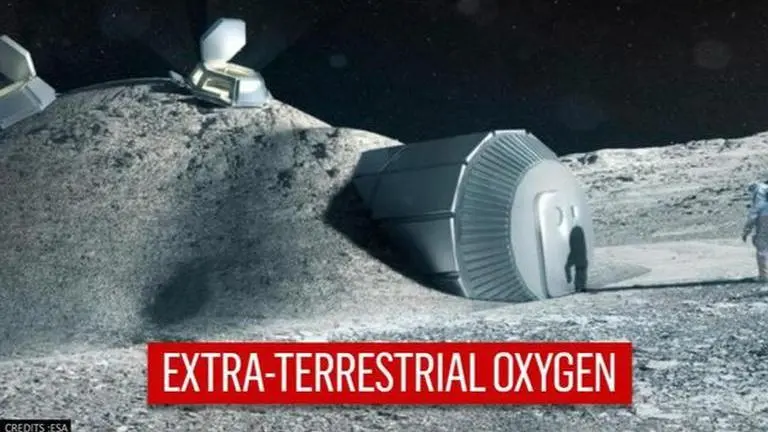Updated 28 November 2020 at 16:36 IST
British scientists 'fine tuning' process to extract oxygen from moon dust 'Lunar regolith'
Scientists will heat simulated moon dust and calcium chloride salt to 950 degrees Celsius and then split the two with electric current, producing metal alloys
- Science News
- 3 min read

British engineers are working on a technology that extracts oxygen from lunar dust, releasing metal as a byproduct that could be utilized for the construction of moon based equipment via 3D printing. The ESA team, led by University of Glasgow PhD candidate and ESA researcher Beth Lomax and ESA researcher Alexandre Meurisse announced on November 27 that it is planning to convert the Lunar regolith, a layer of dusty rock on the moon into breathable O2. The dust contains almost 45 percent oxygen and iron and titanium, which will be used as ‘metal'.
The industrial method is being developed by a UK company, Metalysis using a process known as molten salt heat electrolysis. Scientists will heat the simulated moon dust and calcium chloride salt to 950 degrees Celsius and then split the 02 with an electric current, leaving the metal alloys. The process is expected to generate about 95 percent of oxygen in 50 hours, with at least 75 percent extraction in just the first 15 hours. The mineral extraction process is already being employed by the British engineers on Earth for metal production, according to ESA’s release. Meanwhile, NASA’s Kennedy Space Center in Florida is also working on advanced technologies to extract the space-based resources by melting the lunar regolith under its Artemis program.
[ESA research fellow Alexandre Meurisse and Beth Lomax of the University of Glasgow producing oxygen and metal out of simulated moondust inside ESA's Materials and Electrical Components Laboratory. Credit: ESA]
[ROXY's illustration of a small, simple, compact, and cost-efficient regolith to oxygen and metals conversion facility. Credit: Airbus]
Advertisement
Advertisement
“After landing the first woman and next man on the Moon by 2024, NASA needs technologies that use lunar materials to achieve our secondary goal — sustainable human lunar exploration — to prepare us for long-duration human missions to Mars,” said Kevin Grossman, a materials science expert at NASA.
Turning Moon dust into oxygen: @metalysis_tech is fine-tuning a process that will be used to extract oxygen on the #Moon, leaving behind metal powders that could be used for #3Dprinting a Moon base 👉https://t.co/OJmLvHVvxa #ForwardToTheMoon pic.twitter.com/SbwdQ8fm8a
— ESA (@esa) November 28, 2020
Extra-terrestrial oxygen extraction plant
ESA stated that an extra-terrestrial oxygen extraction plant will be established on the moon to avoid the transportation costs of materials from Earth. The extracted oxygen will be used as rocket fuel and breathing air for settlers in the future. “The project is part of ESA’s preparations to establish a permanent lunar presence,” European Space Agency said. The electrochemical process to extract the oxygen will be carried out by the scientists in a chamber about the size of a ‘washing machine’, ESA informed, adding, that the Metalysis engineers are currently ‘fine-tuning’ the techniques.
[Fine-tuning process that will be used to extract oxygen on the moon. Credit: ESA]
Separately, the ESA and Britain’s Metalysis have invited the engineers and scientists to develop an in-process monitoring system that will track the oxygen production on the future lunar extraction plants. Managing director at Metalysis, Ian Mellor said, “The unimportant by-product of our terrestrial mineral extraction process could have far-reaching applications in space exploration.” He added that the researchers are continuing to explore lunar surfaces with ESA, and the industrial partners, to get the Earthly technologies “space-ready”. ESA materials engineer, Advenit Makaya said that the project is a “stepping stone to establishing an automated pilot oxygen plant on the Moon.” Further he informed, that the metal alloys produced will be utilized for construction materials.”
Published By : Zaini Majeed
Published On: 28 November 2020 at 16:36 IST



